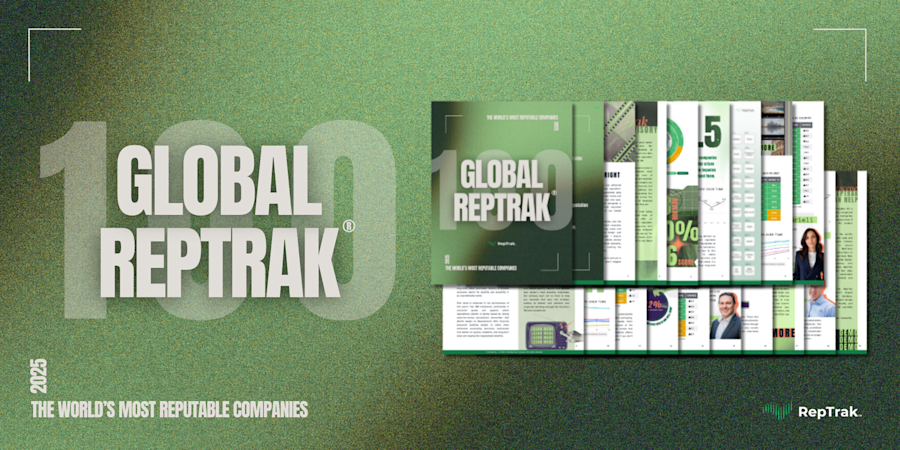How to Create an Effective Corporate Communications Plan, Part 2: Defining Your Brand’s Purpose
Blog Post25 Nov, 2019
This is the second of three posts to help guide you as you plan and budget for an effective corporate communication strategy. In this post, we’ll explore the second step: defining your brand’s purpose. In case you missed it: Part I: Identify Your Stakeholders
Traditionally, the purpose of a corporation has been to serve its shareholders and focus on generating revenue. But priorities have changed, and with the increasing importance of a company’s reputation, brands are identifying other key stakeholders, such as customers, regulators, and market influencers, and putting more emphasis on the value they offer to them. In fact, just this year, The Business Roundtable, a society of CEOs from leading U.S. companies, revised their annual statement on the purpose of a corporation. Where once they focused on the company and the shareholders, they now focus on all stakeholders.
“Each of our stakeholders is essential,” the statement reads. “We commit to deliver value to all of them, for the future success of our companies, our communities, and our country.”
The RepTrak Company’s annual Global RepTrak data (measuring the companies with the strongest reputations worldwide) backs up that statement. In the last three years, the importance of financial performance to key stakeholders has dropped 6.25 percent.
Your brand purpose is like a promise to your stakeholders. And it’s often the corporate communications team’s job to deliver on that promise.
So what is your brand’s purpose? Does it emphasize one stakeholder group over another? Is it in transition? Can you and your team recite it?
Matching Brand Purpose to Your Stakeholders
To start, let’s take a look at some brand purpose statements from other major companies.
Our ultimate purpose is to inspire and develop children to think creatively, reason systematically and release their potential to shape their own future — experiencing the endless human possibility. — The Lego Group
To empower every person and every organization on the planet to achieve more. — Microsoft
We're committed to making a difference to the planet and to people. By sustainably sourcing our ingredients, promoting fair trade without suppliers, always being against animal testing, and championing ethical beauty. We share a common purpose to be a force for good. — Natura & Co.
All of these brands did the same thing when they created their brand purpose: they looked outward to define the investment they made in people other than company executives and shareholders. Each speaks to a greater purpose beyond revenue generation.
LEGO defined the purpose of their products for their end-users: children. For Microsoft, their most important stakeholders are the individuals and organizations who use their software, their goal being to empower them. Finally, Natura understands its customers are looking for sustainable, natural, and ethically sourced products. Their promise is to deliver just that.
For each of these brands, the consumer is the stakeholder on whom they focus. But it could have been their employees or their market influencers, and their brand purpose would reflect that.
Defining, Aligning, and Delivering Brand Purpose
A strong brand purpose is inspirational, forward-looking, and speaks to the greater, positive impact an organization aspires to achieve.
To define your own, answer the following questions with your team.
What is your existing brand purpose?
Identify your current key stakeholders and what solutions you deliver to them. You may find that your stakeholders are, in fact, your shareholders, and that your purpose is to generate revenue.
If that’s the case, it may be time to look at other stakeholders and what the purpose of your brand is to them. Consider your customers, your employees, and the communities in which your business operates and serves.
Is your company communicating its brand purpose through the right channels?
Are you hitting the right channels to best communicate with your stakeholders, and are those channels aligned with your purpose? When it comes to good communication, how many of these do you feel confident about? (Hint: You should be engaging in some multi-touch variation all of these!)
Website
Print media
Advertising
Social media
Executive leadership
Messaging
Internal communications (intranet, employee app, HR, signage, SWAG)
Your company messaging must be aligned from your CEO and the Board of Directors to your newest employee. If one channel communicates a different brand message from another, it causes confusion and only serves to slowly dismantle your brand.
Which of your key stakeholders knows your brand purpose?
Finally, ask yourself this: Which of your most important stakeholders knows your brand purpose so well, they can recite it? If you can’t answer that question, it’s time to go back to questions one and two.
Your brand purpose can and should evolve over time, just as companies that once put emphasis on shareholders now look to other business stakeholders. Repeat this exercise whenever you’re planning your corporate communication strategy. If you launch a new product, rebrand your company, or simply re-evaluate your strategy based on a change in the business climate, make sure your message aligns with your brand purpose.
For a worksheet to help you, download The RepTrak Company’s Corporate Communications Planning & Budgeting Template.
Amanda McCormick Senior Marketing Coordinator The RepTrak Company [email protected]





